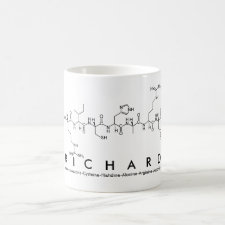
Authors: Chailapakul O, Crooks RM
Article Title: Interactions between organized, surface-confined monolayers and liquid-phase probe molecules .4. Synthesis and characterization of nanoporous molecular assemblies - mechanism of probe penetration.
Publication date: 1995
Journal: Langmuir
Volume: 11
Issue: (4)
Page numbers: 1329-1340.
DOI: 10.1021/la00004a046
Abstract: We report a detailed study of the physical and chemical properties of nanoporous, organomercaptan, self-assembled monolayers (SAMs). The present work expands upon our previous finding that two-component SAMs can serve as primitive models for studying molecular recognition phenomena. The monolayers self-assemble from solution-phase mixtures of two organomercaptans. One of these, which we call the framework component, is an n-alkanethiol (Au/HS(CH2)(15)CH3) about 25 Angstrom thick. The other is a much shorter organomercaptan (Au/HS(C6H4)OH), which we call the template, that induces defects within the much longer, kelp-forest-like framework. The number density of the templates on the metal surface is controlled by the template concentration in the ethanol solution from which it self-assembles and the total time allotted for self-assembly. Under the conditions used in this study the defects induced by the templates are of molecular dimensions and present at a number density of about 10(9)/mu m(2). The synthesis of these defect structures is reproducible and the nanoporous films themselves are stable under a wide variety of conditions. We characterize the monolayers using electrochemical methods. For example, we expose the probes to single- and multicomponent mixtures of redox probe molecules (including: Ru-(NH3)(6)(3+), Fe(CN)(6)(4-), Mo(CN)(8)(4-), Fe(CN)(4)(bpy)(2-), Fe(bpy)(2)(CN)(2), and cytochrome c) that have different hydrated radii, ionic charges, and heterogeneous electron-transfer rate constants. Cyclic voltammetry reveals that the probes are selectively passed through the nanoporous SAMs depending upon their properties. For probes of similar dimensions, selectivity is most closely correlated to ionic charge, although other factors are also important. We also find that the extent of probe penetration, and therefore the pore structure, is determined by the type and concentration of the electrolyte



Join the Society for Molecular Imprinting

New items RSS feed
Sign-up for e-mail updates:
Choose between receiving an occasional newsletter or more frequent e-mail alerts.
Click here to go to the sign-up page.
Is your name elemental or peptidic? Enter your name and find out by clicking either of the buttons below!
Other products you may like:
 MIPdatabase
MIPdatabase









